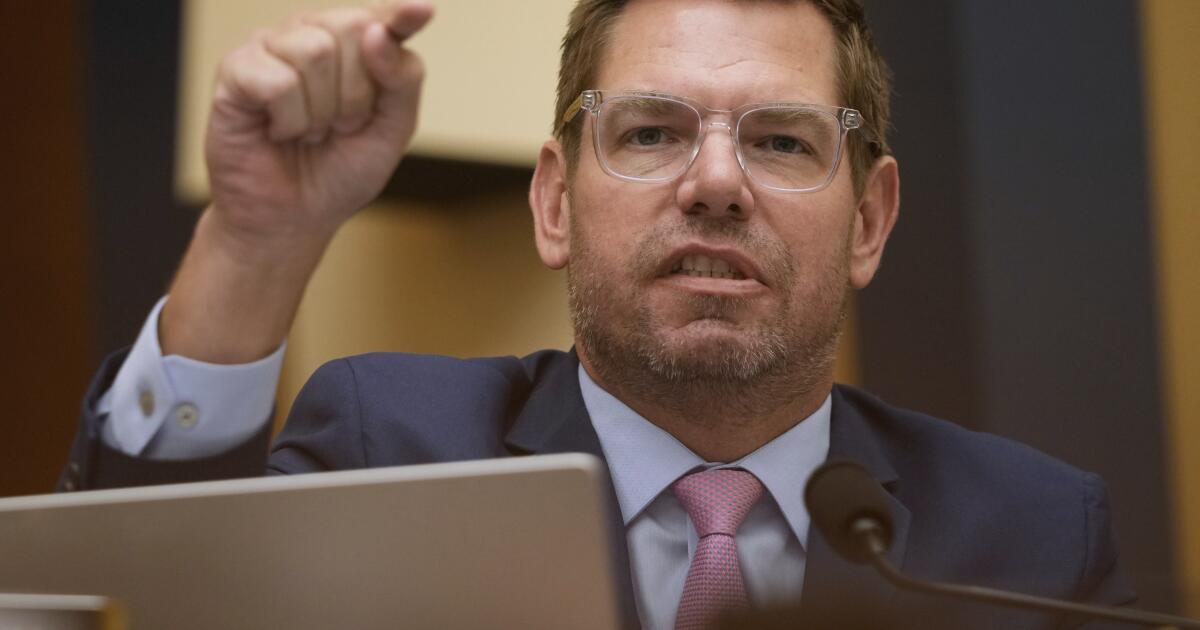Finance
20 major companies to open or expand in Hong Kong this week: finance chief

“These key companies will help attract upstream, midstream and downstream companies in related sectors to cluster in Hong Kong, promoting the vibrant development of the entire innovation and technology ecosystem,” Chan said.
The news came as Chan promised Hong Kong would continue to develop as an international innovation and technology centre, on top of being a multinational supply chain management giant and trade finance hub.
“While traditional markets in Europe and the United States remain important for Hong Kong’s exports of goods, their share has significantly decreased,” he wrote.
Chan said the proportion of exports to the United States fell from 18.6 per cent of the total in 2003 to 6.5 per cent last year and exports to the European Union went down to 6.6 per cent from 10.5 per cent over the same period.
But exports to Asean countries over the time frame went up from 6.1 per cent to 7.9 per cent, which made the bloc Hong Kong’s second-largest export market after mainland China. The proportion of exports destined for the Middle East went up to 3.3 per cent.
Chan said geopolitical developments, global manufacturing adjustments, supply chain restructurings, and the emergence of nearby ports with excellent facilities had reshaped production and export patterns of businesses and affected Hong Kong’s export performance.
Hong Kong plans e-commerce festival ‘to boost city’s brands in mainland’
Hong Kong plans e-commerce festival ‘to boost city’s brands in mainland’
He explained that large manufacturers had adjusted their supply chains, but many medium-sized ones had yet to do so.
Chan added environmental, social and corporate governance, as well as high interest rates, had led to difficulties in trade finance, which had affected some businesses.
“Hong Kong has a solid foundation in trade and various related professional services, providing favourable conditions to capture the opportunities arising from these changes,” he said.
“The key lies in assisting companies in strengthening supply chain and value chain management, and creating higher value for their cross-border businesses through a focus on more efficient commercial and professional services.”
He said the city’s goal, laid out in February’s budget, was to establish itself as a one-stop shop able to offer services that included supply chain management, trade financing, consulting, talent development, and corporate training.
Chan added the city wanted to tap into the estimated 50,000-plus medium-sized manufacturers in the Greater Bay Area and the Yangtze River Delta, many of which would need to engage with overseas businesses as they expanded internationally.
Hong Kong finance chief says Beijing’s growth target ‘not easy, but achievable’
Hong Kong finance chief says Beijing’s growth target ‘not easy, but achievable’
Chan said Hong Kong’s advanced financial infrastructure could provide companies with a variety of funding options and highlighted that more than 70 of the world’s top 100 banks had operations in the city.
“Mainland enterprises settling in Hong Kong will have access to more efficient and lower-cost trade financing services,” he added.
Chan said the city would launch the first phase of the mBridge this year, which will allow cross-border transactions using central bank digital currencies and boost payment speed as well as reduce costs.
The multi-central bank digital currency platform is a cross-border payment and foreign exchange transaction scheme being developed by the Hong Kong Monetary Authority in collaboration with the central banks of the mainland, Thailand and the United Arab Emirates.
Gary Ng Cheuk-yan, a senior economist at corporate and investment bank Natixis, agreed Hong Kong had to adapt to new demands because of a “global supply chain reshuffle”.
“The city will not only need to connect mainland and Hong Kong firms to new markets, but will also have to attract trade and capital flows that could have bypassed the city,” he said.
“The core advantages of Hong Kong remain in free capital flows and low taxes, meaning it is easy for firms to manage trade and investment here.”
But Ng added the city should be prepared for geopolitical problems and stiff competition from other jurisdictions such as Singapore, which held a natural advantage in the Asean bloc of countries as a fellow member.
“Hong Kong will have a role to play, but it will not be as easy as in the past,” he said.

Finance
Elyria keeps sanitation services public, approves rate hikes to avoid financial shortfall
ELYRIA , Ohio— Facing the prospect of millions in deficits, Elyria City Council has chosen to maintain its municipal sanitation department while approving substantial rate increases over the next three years.
The decision came after a financial analysis by Rea Business Advisors warned that without action, the sanitation fund could fall more than $5 million into the red by 2031. The study, an update to similar research from 2018, examined current costs and projected financial needs through the end of the decade.
Adam Letera of Rea Business Advisors outlined several scenarios for council members at their Nov. 17 meeting: privatize services, implement moderate rate increases, or maintain the status quo. A 3% annual rate increase would only postpone a financial shortfall, while a 5% increase could sustain a positive fund balance. Without rate adjustments or privatization, the study projects the sanitation fund would face negative cash flow by 2026.
Despite the financial pressure, the Strategic Planning Committee voted last month to reject privatization. While privatization might offer lower rates, officials highlighted that city-run operations provide a level of service that a private contractor could not match.
On Nov. 24, the finance committee formalized the rate structure for the coming years. The approved plan implements a 5% increase annually for 2026, 2027 and 2028—matching the consultant’s recommendation for financial stability.
Safety Service Director Chris Pyanowski framed the rate adjustment as the necessary follow-up to keeping services municipal. He told the council that having voted to retain the department, members now needed to ensure it remains funded.
The incremental increases are designed to prevent service disruptions while maintaining the city’s full range of sanitation offerings.
Finance
Triodos Bank plans to finance 275 energy transition projects by 2030

Triodos Bank has unveiled its first integrated Climate & Nature Strategy, announcing a comprehensive approach to accelerate the energy transition, reduce financed emissions and increase investment in nature-based solutions.
The Triodos Bank energy transition strategy, ‘Dare to Act. Now.’, sets out measurable targets to drive climate and biodiversity action by 2030.
Discover B2B Marketing That Performs
Combine business intelligence and editorial excellence to reach engaged professionals across 36 leading media platforms.
Find out more
Triodos Bank’s new four-pillar strategy marks the first time the bank has unified its climate and biodiversity ambitions.
The plan includes a commitment to cut absolute financed emissions by at least 42% by 2030, up from the 32% target set in 2022.
The focus is on three key activities that together account for 90% of the bank’s emissions footprint: business loans, mortgages, and listed equities and bonds managed by Triodos Investment Management.
Another pillar of the Triodos Bank energy transition strategy is the financing of 275 energy transition projects over the next five years. The bank aims to support next-generation, decentralised and community-led solutions, building on its “strong track record” in renewable energy finance.
The deal-count target is designed to ensure that finance reaches not only large utilities but also cooperatives, innovators and smaller community-led initiatives that often face challenges in accessing mainstream capital.
In addition to the energy transition targets, Triodos Bank plans to channel €500m ($580.39m) into high-integrity, nature-based solutions (NbS) by 2030. These projects are intended to deliver measurable ecological and social benefits, addressing both climate and biodiversity challenges together.
From 2026, the bank will begin reporting on its progress towards this investment goal, as well as on the positive biodiversity impacts of its financed projects. The aim is to provide greater transparency on how investments in NbS contribute tangible benefits for biodiversity.
Triodos Bank’s fourth strategy includes a strong advocacy component. The bank has called for systemic change in the financial sector.
It has stated that banks are still directing €650bn annually into fossil fuels, which sustains dependency on non-renewable energy sources.
The bank is advocating for international agreements such as the Fossil Fuel Non-Proliferation Treaty to phase out fossil fuels and create robust frameworks for high-integrity NbS.
Additionally, Triodos Bank is campaigning for energy-efficient housing and bio-based building standards.
As part of its advocacy, Triodos Bank has sought for binding rules including mandatory fossil-phase-out pathways for all banks; required short-term emissions reduction targets for 2030–35, with transparent action plans; alignment of financial regulation with the Paris Agreement and adherence to 1.5°C reduction pathways; separate targets for emissions reduction and carbon removal; and robust integrity standards for nature-based solutions.
Triodos Bank CEO Marcel Zuidam emphasised the interconnectedness of climate change and biodiversity loss, stating: “Climate change and biodiversity loss are not separate crises. They are deeply interconnected. Restoring ecosystems is essential to stabilising the climate, and climate action must protect biodiversity. Our strategy is about real reductions, real solutions and real leadership.
“We invite the financial sector to join us in embracing long-term well-being and taking action for a hopeful future. Together, we can drive the systemic change needed to stay within planetary boundaries. This means aligning financial flows with the Paris Agreement, investing in nature restoration and a clear road map to end the financing of the fossil fuel industry.”
Netherlands-based Triodos Bank has branches in Belgium, Germany, the UK and Spain.
Finance
Scott Benson named vice chancellor for business and finance at UNK – UNK NEWS

Post Views: 95
KEARNEY – Scott Benson has been named vice chancellor for business and finance at the University of Nebraska at Kearney, pending approval from the University of Nebraska Board of Regents. He has served in the interim role since July.
Benson has been with the university since 2009 and has held a range of leadership positions in business services, procurement, accounts payable and residence life. He most recently served as human resources director.
UNK’s Division of Business and Finance oversees financial operations that support offices including Budget; Facilities Management and Planning; Finance; Human Resources; Strategic Partnerships and Operations; and the Plambeck Early Childhood Education Center. The division also manages contracts with Dining Services and the Loper Spirit Shop.
Benson earned a Master of Business Administration from UNK with an emphasis in human resources and also holds a bachelor’s degree from South Dakota State University.
He is active in the Kearney community through his service with the Kearney Housing Agency and Kearney Public Schools Foundation. He launched the Loper Employee Professional Development series, a campuswide initiative that promotes professional growth for UNK employees.
-

 Technology6 days ago
Technology6 days agoNew scam sends fake Microsoft 365 login pages
-

 News14 hours ago
News14 hours agoTrump threatens strikes on any country he claims makes drugs for US
-

 Politics13 hours ago
Politics13 hours agoTrump rips Somali community as federal agents reportedly eye Minnesota enforcement sweep
-

 Politics6 days ago
Politics6 days agoRep. Swalwell’s suit alleges abuse of power, adds to scrutiny of Trump official’s mortgage probes
-

 World14 hours ago
World14 hours agoHonduras election council member accuses colleague of ‘intimidation’
-

 Business1 week ago
Business1 week agoStruggling Six Flags names new CEO. What does that mean for Knott’s and Magic Mountain?
-

 Ohio7 days ago
Ohio7 days agoSnow set to surge across Northeast Ohio, threatening Thanksgiving travel
-

 News6 days ago
News6 days ago2 National Guard members wounded in ‘targeted’ attack in D.C., authorities say






















